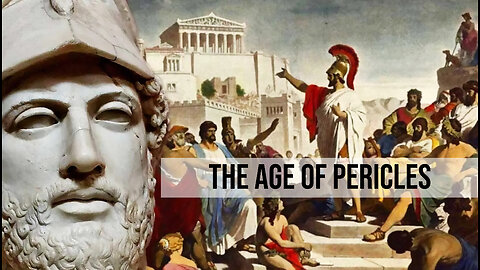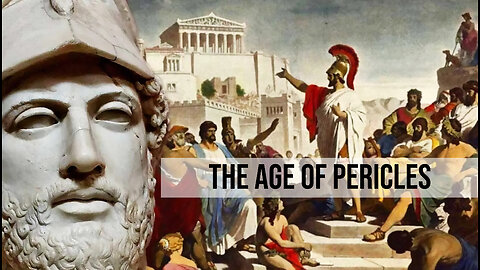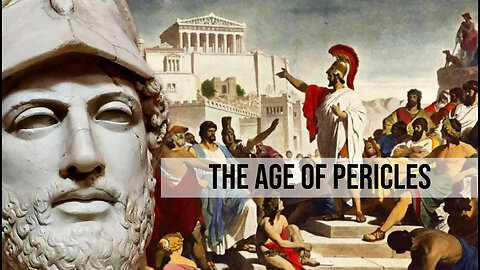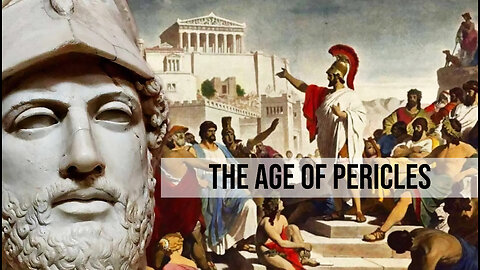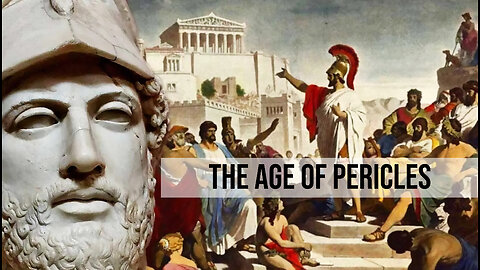
The Age of Pericles
24 videos
Updated 4 months ago
24 lectures, 30 minutes/lecture
Taught by Jeremy McInerney, Ph.D.
Associate Professor, Department of Classical Studies, University of Pennsylvania
-
The Age of Pericles | The Agora - An Ancient Marketplace (Lecture 1)
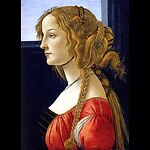 Adaneth - History&Politics24 lectures, 30 minutes/lecture Taught by Jeremy McInerney, Ph.D. Associate Professor, Department of Classical Studies University of Pennsylvania Lecture 2: https://rumble.com/v5e8ntv-the-age-of-pericles-athens-and-the-persian-wars-lecture-2.html Athens in the 5th century B.C. witnessed a cultural flowering of extraordinary power and importance for Western culture. In this series of 24 lectures, we will use the career of Pericles as the prism through which to examine the achievements of Athens in its golden age. Pericles first appeared on the public stage shortly after the Persian Wars, seminal events that saw the Greeks defeat the numerically superior Persians. In the generation that followed, Athens rapidly transformed the alliance of Greek states dedicated to taking the war back to Persia into an Aegean empire, dominated by the Athenians and their fleet. At the same time, this dramatic increase in power and prestige was accompanied by the growth of full participatory democracy. We examine the daily working of that democracy, asking how an Athenian was trained for citizenship. What did democracy mean in practice? What did freedom and autonomy mean to a society that relied on slaves and was ruthless in its treatment of its subjects? To answer these questions, we juxtapose the breathtaking accomplishments of the Athenians, in fields such as philosophy, tragedy, comedy, sculpture, and architecture, with the exclusion of women from public life, the torture and abuse of slaves, and the execution of other Greek populations. We will follow the Athenians from the height of their power to defeat at the hands of the Spartans. The picture that emerges is a portrait of a complex people and a complicated culture. Restless, adventurous, sophisticated, crude, pious, the Athenians are a people whose culture has a special significance for us. The ties between us are not casual, but deeply meaningful. Lecture 1: In the heart of Athens lay the agora, or marketplace. This was the center of the commercial, religious, and political life of Athens. This lecture surveys each of these categories, with special attention to the buildings on the western side of the agora, where the Athenian council met, where the state archive was housed, and where officials entertained state visitors and ambassadors. Laws were put on display in the Royal Stoa, and legal cases were often first investigated by magistrates here. Because the agora was home to moneylenders, traders, and a wide variety of manufacturers, we will also look at the economic activity that took place on a daily basis in downtown Athens at the time of Pericles. In this space, hundreds of stalls were set up, and the range of economic activities taking place suggests that the agora was like a huge bazaar. Sausage-sellers, moneylenders, metalworkers, perfumers, shoemakers, and potters all congregated in parts of the agora. These activities were watched by state officials who ensured that fair weights and measures were used and that grain was sold at fair prices. Finally, we will consider the agora as a religious complex. Within the boundaries of the agora, altars, small sanctuaries, and even temples were dedicated to the various gods who oversaw the welfare of the state. Reconstructions, plans, photographs, and literary descriptions allow us to paint a vivid picture of daily life in the bustling heart of Athens. Suggested Reading: Camp, J. M. The Athenian Agora: Excavations in the Heart of Classical Athens. London: Thames and Hudson, 1986. Thompson, D. B. An Ancient Shopping Center. The Athenian Agora. Princeton: American School of Classical Studies at Athens, 1971.329 views 5 comments
Adaneth - History&Politics24 lectures, 30 minutes/lecture Taught by Jeremy McInerney, Ph.D. Associate Professor, Department of Classical Studies University of Pennsylvania Lecture 2: https://rumble.com/v5e8ntv-the-age-of-pericles-athens-and-the-persian-wars-lecture-2.html Athens in the 5th century B.C. witnessed a cultural flowering of extraordinary power and importance for Western culture. In this series of 24 lectures, we will use the career of Pericles as the prism through which to examine the achievements of Athens in its golden age. Pericles first appeared on the public stage shortly after the Persian Wars, seminal events that saw the Greeks defeat the numerically superior Persians. In the generation that followed, Athens rapidly transformed the alliance of Greek states dedicated to taking the war back to Persia into an Aegean empire, dominated by the Athenians and their fleet. At the same time, this dramatic increase in power and prestige was accompanied by the growth of full participatory democracy. We examine the daily working of that democracy, asking how an Athenian was trained for citizenship. What did democracy mean in practice? What did freedom and autonomy mean to a society that relied on slaves and was ruthless in its treatment of its subjects? To answer these questions, we juxtapose the breathtaking accomplishments of the Athenians, in fields such as philosophy, tragedy, comedy, sculpture, and architecture, with the exclusion of women from public life, the torture and abuse of slaves, and the execution of other Greek populations. We will follow the Athenians from the height of their power to defeat at the hands of the Spartans. The picture that emerges is a portrait of a complex people and a complicated culture. Restless, adventurous, sophisticated, crude, pious, the Athenians are a people whose culture has a special significance for us. The ties between us are not casual, but deeply meaningful. Lecture 1: In the heart of Athens lay the agora, or marketplace. This was the center of the commercial, religious, and political life of Athens. This lecture surveys each of these categories, with special attention to the buildings on the western side of the agora, where the Athenian council met, where the state archive was housed, and where officials entertained state visitors and ambassadors. Laws were put on display in the Royal Stoa, and legal cases were often first investigated by magistrates here. Because the agora was home to moneylenders, traders, and a wide variety of manufacturers, we will also look at the economic activity that took place on a daily basis in downtown Athens at the time of Pericles. In this space, hundreds of stalls were set up, and the range of economic activities taking place suggests that the agora was like a huge bazaar. Sausage-sellers, moneylenders, metalworkers, perfumers, shoemakers, and potters all congregated in parts of the agora. These activities were watched by state officials who ensured that fair weights and measures were used and that grain was sold at fair prices. Finally, we will consider the agora as a religious complex. Within the boundaries of the agora, altars, small sanctuaries, and even temples were dedicated to the various gods who oversaw the welfare of the state. Reconstructions, plans, photographs, and literary descriptions allow us to paint a vivid picture of daily life in the bustling heart of Athens. Suggested Reading: Camp, J. M. The Athenian Agora: Excavations in the Heart of Classical Athens. London: Thames and Hudson, 1986. Thompson, D. B. An Ancient Shopping Center. The Athenian Agora. Princeton: American School of Classical Studies at Athens, 1971.329 views 5 comments -
The Age of Pericles | Athens and the Persian Wars (Lecture 2)
 Adaneth - History&PoliticsLecture 2: In this lecture, we take a close look at the two invasions by the Persians that stimulated the fabulous growth of Athens in the 5th century. From the Persian point of view, Athens and the rest of Greece were insignificant territories on the far western borders of a great empire. Yet the Athenians successfully resisted the Persians in 490 at Marathon, and when the Persians returned in greater numbers 10 years later, the Greeks defied overwhelming odds to defeat the Persians at sea in 480 at Salamis and, again, a year later at Plataea. The descriptions of Herodotus reveal the impact on the Greeks of their victory. Heaven had decreed that Persia should not rule the west. In this lecture, we examine the beginning of a split between east and west that still overshadows the modern world. Suggested Reading: Herodotus. The Histories. Trans. by J. Marincola. Harmondsworth: Penguin, 2001. Lecture 3: https://rumble.com/v5e8prh-the-age-of-pericles-the-athenian-empire-lecture-3.html253 views 1 comment
Adaneth - History&PoliticsLecture 2: In this lecture, we take a close look at the two invasions by the Persians that stimulated the fabulous growth of Athens in the 5th century. From the Persian point of view, Athens and the rest of Greece were insignificant territories on the far western borders of a great empire. Yet the Athenians successfully resisted the Persians in 490 at Marathon, and when the Persians returned in greater numbers 10 years later, the Greeks defied overwhelming odds to defeat the Persians at sea in 480 at Salamis and, again, a year later at Plataea. The descriptions of Herodotus reveal the impact on the Greeks of their victory. Heaven had decreed that Persia should not rule the west. In this lecture, we examine the beginning of a split between east and west that still overshadows the modern world. Suggested Reading: Herodotus. The Histories. Trans. by J. Marincola. Harmondsworth: Penguin, 2001. Lecture 3: https://rumble.com/v5e8prh-the-age-of-pericles-the-athenian-empire-lecture-3.html253 views 1 comment -
The Age of Pericles | The Athenian Empire (Lecture 3)
 Adaneth - History&PoliticsLecture 3: In this lecture, we tackle the difficult question of how and when Athens was transformed from the victor of the Persian Wars into the imperial power of the Aegean. Using Thucydides as our guide, as well as key Greek inscriptions, we will examine the record of Athenian campaigns. At first, they were designed to drive the Persians from the Aegean, but soon, the Athenians were compelling smaller Greek states to join their alliance and punishing those who resisted or tried to secede. The allies paid tribute to Athens, money that was used to equip a vast fleet and, later, helped finance the building of the great temples of Athens, such as the Parthenon. We will also examine a lively debate among historians that concerns the more restrictive measures imposed by the Athenians. Garrisons, Athenian colonists, and the use of Athenian weights and measures were all mandated by law, but some historians see these as late developments, while others interpret the Athenians’ empire as coercive from an early date. The dating of inscriptions, therefore, influences the entire interpretation of the Athenian Empire. Suggested Reading: Meier, Christian. Athens: A Portrait of the City in Its Golden Age. New York: Metropolitan, 1993. Lecture 4: https://rumble.com/v5e97x9-the-age-of-pericles-the-career-of-pericles-lecture-4.html217 views
Adaneth - History&PoliticsLecture 3: In this lecture, we tackle the difficult question of how and when Athens was transformed from the victor of the Persian Wars into the imperial power of the Aegean. Using Thucydides as our guide, as well as key Greek inscriptions, we will examine the record of Athenian campaigns. At first, they were designed to drive the Persians from the Aegean, but soon, the Athenians were compelling smaller Greek states to join their alliance and punishing those who resisted or tried to secede. The allies paid tribute to Athens, money that was used to equip a vast fleet and, later, helped finance the building of the great temples of Athens, such as the Parthenon. We will also examine a lively debate among historians that concerns the more restrictive measures imposed by the Athenians. Garrisons, Athenian colonists, and the use of Athenian weights and measures were all mandated by law, but some historians see these as late developments, while others interpret the Athenians’ empire as coercive from an early date. The dating of inscriptions, therefore, influences the entire interpretation of the Athenian Empire. Suggested Reading: Meier, Christian. Athens: A Portrait of the City in Its Golden Age. New York: Metropolitan, 1993. Lecture 4: https://rumble.com/v5e97x9-the-age-of-pericles-the-career-of-pericles-lecture-4.html217 views -
The Age of Pericles | The Career of Pericles (Lecture 4)
 Adaneth - History&PoliticsLecture 4: Now that we have formed a better idea of the power of Athens and understand the world into which Pericles was born, it is time to look at the details of his family and career. In this lecture, we look at the Alcmaeonidae, one of the great clans of Athens, to whom Pericles was related on his mother’s side. We then follow his early days, beginning with his first notable public role, as patron of the first performance of Aeschylus’s Persians in 472. By the middle of the 5th century, we find Pericles successfully commanding Athenian expeditions to the nearby island of Euboea. During the period 445–430, Pericles was reelected general every year, effectively making him more powerful than any archon or judge. From this position of dominance, he not only led the army but shaped a new Athenian foreign policy that turned away from the Persian threat and, instead, addressed Sparta. The contradictions of Pericles will be emphasized: a well-born man who flourished in a democracy, a career of influence in a democratic system where men usually rotated out of power every year, and finally, a man who advised the Athenians to be cautious yet did more than any other to prepare them for war with Sparta. Suggested Reading: Plutarch. Life of Pericles. In Plutarch’s Lives: The Dryden Translation. Ed. by A. H. Clough. New York: Modern Library, 2001. Lecture 5: https://rumble.com/v5e9q17-the-age-of-pericles-aspasia-lecture-5.html212 views 1 comment
Adaneth - History&PoliticsLecture 4: Now that we have formed a better idea of the power of Athens and understand the world into which Pericles was born, it is time to look at the details of his family and career. In this lecture, we look at the Alcmaeonidae, one of the great clans of Athens, to whom Pericles was related on his mother’s side. We then follow his early days, beginning with his first notable public role, as patron of the first performance of Aeschylus’s Persians in 472. By the middle of the 5th century, we find Pericles successfully commanding Athenian expeditions to the nearby island of Euboea. During the period 445–430, Pericles was reelected general every year, effectively making him more powerful than any archon or judge. From this position of dominance, he not only led the army but shaped a new Athenian foreign policy that turned away from the Persian threat and, instead, addressed Sparta. The contradictions of Pericles will be emphasized: a well-born man who flourished in a democracy, a career of influence in a democratic system where men usually rotated out of power every year, and finally, a man who advised the Athenians to be cautious yet did more than any other to prepare them for war with Sparta. Suggested Reading: Plutarch. Life of Pericles. In Plutarch’s Lives: The Dryden Translation. Ed. by A. H. Clough. New York: Modern Library, 2001. Lecture 5: https://rumble.com/v5e9q17-the-age-of-pericles-aspasia-lecture-5.html212 views 1 comment -
The Age of Pericles | Aspasia (Lecture 5)
 Adaneth - History&PoliticsLecture 5: No discussion of the age of Pericles would be complete without a look at the great man’s mistress and the mother of his sons, Aspasia. This lecture tries to separate myth from fact and examines the various rumors surrounding Aspasia, especially the politically motivated charge that she wrote Pericles’s speeches. A closer examination reveals that Aspasia is not merely an example of the hetaira, or courtesan, a familiar figure in many societies, but that her brilliance and sophistication reveal many of the contradictions in Athenian society. This is a society dominated by men, where women are prized as wives and mothers. Even so, men flocked to the company of such women as Aspasia for music, entertainment, and conversation. Sometimes, the attachment between a man and his hetaira became permanent, the equivalent of a marriage, yet thanks to Pericles’s laws, the children of such relationships could not inherit their father’s citizenship. Aspasia’s situation reveals the peculiar intersections of gender, marriage, and citizenship in Athenian society. Suggested Reading: Henry, M. Prisoner of History: Aspasia of Miletus and Her Biographical Tradition. New York: Oxford University Press, 1995. Demosthenes. “An Illegal Union: Against Neaera.” In Freeman, K. The Murder of Herodes. Indianapolis: Hackett, 1991. Lecture 6: https://rumble.com/v5eelsd-the-age-of-pericles-parthenon-and-acropolis-lecture-6.html195 views 1 comment
Adaneth - History&PoliticsLecture 5: No discussion of the age of Pericles would be complete without a look at the great man’s mistress and the mother of his sons, Aspasia. This lecture tries to separate myth from fact and examines the various rumors surrounding Aspasia, especially the politically motivated charge that she wrote Pericles’s speeches. A closer examination reveals that Aspasia is not merely an example of the hetaira, or courtesan, a familiar figure in many societies, but that her brilliance and sophistication reveal many of the contradictions in Athenian society. This is a society dominated by men, where women are prized as wives and mothers. Even so, men flocked to the company of such women as Aspasia for music, entertainment, and conversation. Sometimes, the attachment between a man and his hetaira became permanent, the equivalent of a marriage, yet thanks to Pericles’s laws, the children of such relationships could not inherit their father’s citizenship. Aspasia’s situation reveals the peculiar intersections of gender, marriage, and citizenship in Athenian society. Suggested Reading: Henry, M. Prisoner of History: Aspasia of Miletus and Her Biographical Tradition. New York: Oxford University Press, 1995. Demosthenes. “An Illegal Union: Against Neaera.” In Freeman, K. The Murder of Herodes. Indianapolis: Hackett, 1991. Lecture 6: https://rumble.com/v5eelsd-the-age-of-pericles-parthenon-and-acropolis-lecture-6.html195 views 1 comment -
The Age of Pericles | Parthenon and Acropolis (Lecture 6)
 Adaneth - History&PoliticsLecture 6: This lecture concentrates on the glorious building program associated with Pericles. By the end of the 5th century, the Acropolis of Athens, previously home to a motley assortment of shrines, temples, treasure houses, statues, and altars, had been transformed into an artistically integrated sanctuary dominated by three buildings: the Propylaea, the Parthenon, and the Erechtheum. The first of these was a monumental gateway, flanked by such landmarks as the small temple to Athena Nike. In the Propylaea was housed a picture gallery, containing masterpieces of 5th-century painting, now all lost. Through its gateway, visitors, often as part of the stately Panathenaic procession, made their way onto the great rock that overlooked the city of Athens. To the left as one enters the Acropolis lies the Erechtheum, an extraordinary and unique building that housed half a dozen separate cults inside its walls, on its porches, and even in its foundations. South of this lies the Parthenon, the most glorious temple ever built by the Greeks. By pictures, plans, and reconstructions, we will examine the architecture of these buildings, as well as their decoration, showing how they combined to serve as the religious capitol of the new Athenian Empire under Pericles. Suggested Reading: Hurwit, J. M. The Athenian Acropolis. Cambridge: Cambridge University Press, 1999. Topper, R. J. The Acropolis. London: Weidenfeld and Nicolson, 1971. Lecture 7: https://rumble.com/v5eemt9-the-age-of-pericles-panathenaea-the-festivals-of-athena-lecture-7.html195 views
Adaneth - History&PoliticsLecture 6: This lecture concentrates on the glorious building program associated with Pericles. By the end of the 5th century, the Acropolis of Athens, previously home to a motley assortment of shrines, temples, treasure houses, statues, and altars, had been transformed into an artistically integrated sanctuary dominated by three buildings: the Propylaea, the Parthenon, and the Erechtheum. The first of these was a monumental gateway, flanked by such landmarks as the small temple to Athena Nike. In the Propylaea was housed a picture gallery, containing masterpieces of 5th-century painting, now all lost. Through its gateway, visitors, often as part of the stately Panathenaic procession, made their way onto the great rock that overlooked the city of Athens. To the left as one enters the Acropolis lies the Erechtheum, an extraordinary and unique building that housed half a dozen separate cults inside its walls, on its porches, and even in its foundations. South of this lies the Parthenon, the most glorious temple ever built by the Greeks. By pictures, plans, and reconstructions, we will examine the architecture of these buildings, as well as their decoration, showing how they combined to serve as the religious capitol of the new Athenian Empire under Pericles. Suggested Reading: Hurwit, J. M. The Athenian Acropolis. Cambridge: Cambridge University Press, 1999. Topper, R. J. The Acropolis. London: Weidenfeld and Nicolson, 1971. Lecture 7: https://rumble.com/v5eemt9-the-age-of-pericles-panathenaea-the-festivals-of-athena-lecture-7.html195 views -
The Age of Pericles | Panathenaea - The Festivals of Athena (Lecture 7)
 Adaneth - History&PoliticsLecture 7: In this lecture, we examine closely the great religious procession that dominated Athenian religious life every four years: the Panathenaea. We will look at the question of Athena’s position as guardian of the city and discuss the importance of celebrating the goddess’s role by assembling the entire community to process across the center of Athens. We will look at the organization of the procession, the roles played by the young, the old, those in the army, and the position of priests and priestesses. The procession is, in fact, a significant event that dramatically brings to life the social relations that bind the community together. We will examine the route of the Sacred Way across the city and up to the Acropolis. In the 5th century, as Athens became an imperial city, each of the allies was ordered to send a suit of armor and a cow for sacrifice. These joined the parade, as a stately procession of cattle wound its way to the Acropolis, where it was slaughtered and distributed to the populace. The procession also figured on the frieze on the Parthenon, emphasizing the importance once again of this majestic building to the entire community. Suggested Reading: Burkert, W. Greek Religion: Archaic and Classical. Oxford: Oxford University Press, 1985. Neils, J., ed. Worshipping Athena. Panathenaia and Parthenon. Madison: University of Wisconsin Press, 1996. Parke, H. W. Festivals of the Athenians. London: Thames and Hudson, 1977. Lecture 8: https://rumble.com/v5eeqdf-the-age-of-pericles-paideia-education-in-ancient-athens-lecture-8.html205 views
Adaneth - History&PoliticsLecture 7: In this lecture, we examine closely the great religious procession that dominated Athenian religious life every four years: the Panathenaea. We will look at the question of Athena’s position as guardian of the city and discuss the importance of celebrating the goddess’s role by assembling the entire community to process across the center of Athens. We will look at the organization of the procession, the roles played by the young, the old, those in the army, and the position of priests and priestesses. The procession is, in fact, a significant event that dramatically brings to life the social relations that bind the community together. We will examine the route of the Sacred Way across the city and up to the Acropolis. In the 5th century, as Athens became an imperial city, each of the allies was ordered to send a suit of armor and a cow for sacrifice. These joined the parade, as a stately procession of cattle wound its way to the Acropolis, where it was slaughtered and distributed to the populace. The procession also figured on the frieze on the Parthenon, emphasizing the importance once again of this majestic building to the entire community. Suggested Reading: Burkert, W. Greek Religion: Archaic and Classical. Oxford: Oxford University Press, 1985. Neils, J., ed. Worshipping Athena. Panathenaia and Parthenon. Madison: University of Wisconsin Press, 1996. Parke, H. W. Festivals of the Athenians. London: Thames and Hudson, 1977. Lecture 8: https://rumble.com/v5eeqdf-the-age-of-pericles-paideia-education-in-ancient-athens-lecture-8.html205 views -
The Age of Pericles | Paideia - Education in Ancient Athens (Lecture 8)
 Adaneth - History&PoliticsLecture 8: How did childhood differ in antiquity from today? What constituted the education of young Athenians in the age of Pericles? In this lecture, we will recreate the experience of childhood among the Greeks, with special attention to ways children were prepared for their lives as citizens. Basic levels of literacy and numeracy were expected then as now, so that young men could read, write, and count, but a great deal more emphasis was placed on memorizing poetry, especially Homer. Many leading men composed verses, if not entire plays, and were often capable of playing musical instruments, so that poetry and music played a much fuller role in education than today. Physical education was also considered central to the training of a boy. This was not only to guarantee strength and endurance, but to prepare the youth for formal training as a soldier. Part of the young Athenian’s education was, therefore, spent in the ephebeia, patrolling the borders of Athens and learning about the discipline of hoplite warfare before becoming a full-fledged member of the Athenian army. Hunting was always a popular diversion, well regarded because it put food on the table and was a suitable pastime for both men and boys not engaged in warfare. Young adults who had received elementary training in letters and sports graduated to training in the gymnasium and palaestra, where wrestling and boxing kept the body fit and lectures kept the mind nimble. As a rule, girls in Athens received little formal training beyond the skills needed for running a household after their marriage. Lacey, W. K. The Family in Classical Greece. London: Thames and Hudson, 1968. Jones, N. F. Ancient Greece: State and Society. New Jersey: Prentice Hall, 1997. Lecture 9: https://rumble.com/v5eeqn9-the-age-of-pericles-marriage-in-pericless-athens-lecture-9.html204 views
Adaneth - History&PoliticsLecture 8: How did childhood differ in antiquity from today? What constituted the education of young Athenians in the age of Pericles? In this lecture, we will recreate the experience of childhood among the Greeks, with special attention to ways children were prepared for their lives as citizens. Basic levels of literacy and numeracy were expected then as now, so that young men could read, write, and count, but a great deal more emphasis was placed on memorizing poetry, especially Homer. Many leading men composed verses, if not entire plays, and were often capable of playing musical instruments, so that poetry and music played a much fuller role in education than today. Physical education was also considered central to the training of a boy. This was not only to guarantee strength and endurance, but to prepare the youth for formal training as a soldier. Part of the young Athenian’s education was, therefore, spent in the ephebeia, patrolling the borders of Athens and learning about the discipline of hoplite warfare before becoming a full-fledged member of the Athenian army. Hunting was always a popular diversion, well regarded because it put food on the table and was a suitable pastime for both men and boys not engaged in warfare. Young adults who had received elementary training in letters and sports graduated to training in the gymnasium and palaestra, where wrestling and boxing kept the body fit and lectures kept the mind nimble. As a rule, girls in Athens received little formal training beyond the skills needed for running a household after their marriage. Lacey, W. K. The Family in Classical Greece. London: Thames and Hudson, 1968. Jones, N. F. Ancient Greece: State and Society. New Jersey: Prentice Hall, 1997. Lecture 9: https://rumble.com/v5eeqn9-the-age-of-pericles-marriage-in-pericless-athens-lecture-9.html204 views -
The Age of Pericles | Marriage in Pericles’s Athens (Lecture 9)
 Adaneth - History&PoliticsLecture 9: One of the most dramatic legal cases to survive from the classical age is the speech Against Neaera, in which the speaker, Theomnestus, claimed that Neaera deserved to be prosecuted, convicted, and sold into slavery because she was not the legal wife of Stephanus but, in fact, a former slave and prostitute. The case illustrates the enormous anxiety that surrounded marriage in Pericles’s day. Wives had to be from guaranteed citizen families; otherwise, the children of these marriages were regarded as illegitimate. In this lecture, we will contrast the case of Neaera with the anonymous wife who figures prominently in the handbook written by Xenophon, On Household Management. In this text, Ischomachus makes it clear that a good wife should stay inside the home managing the servants and weaving. Being seen outside, even being spoken about, is regarded as a threat to the woman’s reputation. Marriage for love, therefore, is not a common practice. Marriage in Pericles’s Athens is a contractual arrangement between father-in-law and son-in-law. In fact, marriages were often contracted within the family, between cousins or uncles and nieces, in order to keep the family’s property intact. Suggested Reading: Freeman, K. The Murder of Herodes. Indianapolis: Hackett, 1991. Jones, N. F. Ancient Greece: State and Society. Upper Saddle River, N.J.: Prentice Hall, 1996. Lacey, W. K. The Family in Classical Greece. London: Thames and Hudson, 1968. Winkler, J. J. The Constraints of Desire: The Anthropology of Sex and Gender in Ancient Greece. London: Routledge, 1990. Lecture 10: https://rumble.com/v5eequj-the-age-of-pericles-family-and-property-lecture-10.html186 views 2 comments
Adaneth - History&PoliticsLecture 9: One of the most dramatic legal cases to survive from the classical age is the speech Against Neaera, in which the speaker, Theomnestus, claimed that Neaera deserved to be prosecuted, convicted, and sold into slavery because she was not the legal wife of Stephanus but, in fact, a former slave and prostitute. The case illustrates the enormous anxiety that surrounded marriage in Pericles’s day. Wives had to be from guaranteed citizen families; otherwise, the children of these marriages were regarded as illegitimate. In this lecture, we will contrast the case of Neaera with the anonymous wife who figures prominently in the handbook written by Xenophon, On Household Management. In this text, Ischomachus makes it clear that a good wife should stay inside the home managing the servants and weaving. Being seen outside, even being spoken about, is regarded as a threat to the woman’s reputation. Marriage for love, therefore, is not a common practice. Marriage in Pericles’s Athens is a contractual arrangement between father-in-law and son-in-law. In fact, marriages were often contracted within the family, between cousins or uncles and nieces, in order to keep the family’s property intact. Suggested Reading: Freeman, K. The Murder of Herodes. Indianapolis: Hackett, 1991. Jones, N. F. Ancient Greece: State and Society. Upper Saddle River, N.J.: Prentice Hall, 1996. Lacey, W. K. The Family in Classical Greece. London: Thames and Hudson, 1968. Winkler, J. J. The Constraints of Desire: The Anthropology of Sex and Gender in Ancient Greece. London: Routledge, 1990. Lecture 10: https://rumble.com/v5eequj-the-age-of-pericles-family-and-property-lecture-10.html186 views 2 comments -
The Age of Pericles | Family and Property (Lecture 10)
 Adaneth - History&PoliticsLecture 10: One of the most abundant sources of information from the Athens of Pericles is the large number of surviving legal speeches. These are not all about matters of politics or international policy. The majority, in fact, are examples of the many suits generated in the Athenian courts by property disputes between or even within families. In this lecture, we will use speeches by Lysias, Demosthenes, and Isaeus to investigate the complex web of family ties and property ownership. In the case of Diogeiton’s family, the members of one branch of the family sued their relatives, claiming that trust funds had been embezzled by their own grandfather! More typical was the dispute in which two families came to blows over a wall erected along the property line preventing runoff water from reaching one of their farms. In a third case, disputes arose when Ciron died, leaving descendants from two marriages to battle over the inheritance. These cases give a fascinating glimpse into the lives of ordinary families of 5th-century Athens, for whom the land was the supreme measure of wealth. Suggested Reading: Freeman, K. The Murder of Herodes. Indianapolis: Hackett, 1991. Jones, N. F. Ancient Greece: State and Society. Upper Saddle River, N.J.: Prentice Hall, 1996. Lacey, W. K. The Family in Classical Greece. London: Thames and Hudson, 1968. Lecture 11: https://rumble.com/v5ej37m-the-age-of-pericles-coins-trade-and-business-lecture-11.html187 views
Adaneth - History&PoliticsLecture 10: One of the most abundant sources of information from the Athens of Pericles is the large number of surviving legal speeches. These are not all about matters of politics or international policy. The majority, in fact, are examples of the many suits generated in the Athenian courts by property disputes between or even within families. In this lecture, we will use speeches by Lysias, Demosthenes, and Isaeus to investigate the complex web of family ties and property ownership. In the case of Diogeiton’s family, the members of one branch of the family sued their relatives, claiming that trust funds had been embezzled by their own grandfather! More typical was the dispute in which two families came to blows over a wall erected along the property line preventing runoff water from reaching one of their farms. In a third case, disputes arose when Ciron died, leaving descendants from two marriages to battle over the inheritance. These cases give a fascinating glimpse into the lives of ordinary families of 5th-century Athens, for whom the land was the supreme measure of wealth. Suggested Reading: Freeman, K. The Murder of Herodes. Indianapolis: Hackett, 1991. Jones, N. F. Ancient Greece: State and Society. Upper Saddle River, N.J.: Prentice Hall, 1996. Lacey, W. K. The Family in Classical Greece. London: Thames and Hudson, 1968. Lecture 11: https://rumble.com/v5ej37m-the-age-of-pericles-coins-trade-and-business-lecture-11.html187 views

